 What tech gear do you bring with you if you're spending a year backpacking around the world? We're not gadget-heads, but about 20% of the weight we carried with us consisted of gadgets of one sort another -- camera, laptops, cell phones, power adapters. As we started planning gear for our trip, we had four concerns in mind:
What tech gear do you bring with you if you're spending a year backpacking around the world? We're not gadget-heads, but about 20% of the weight we carried with us consisted of gadgets of one sort another -- camera, laptops, cell phones, power adapters. As we started planning gear for our trip, we had four concerns in mind:
- Weight: Every extra ounce we took would further strain our backs
- Loss: We might have things lost or stolen, so we preferred cheap gear we could keep hidden, and replace if needed
- Cost: We wanted to save money, reusing things we owned whenever possible
- Resilience: Things would break or get stolen, so backup capacity was important
Here's what we brought, and why.
Photos
 As we were planning our trip, we decided to try to avoid buying souvenirs, and focus on taking pictures. Barnali likes taking photos, and she owns a Nikon D50 digital SLR. It's an SLR, and therefore heavy and visible, but if we didn't use it now, then when? We also brought with us her second lens, a lovely (and large) zoom lens. We knew we'd be taking a lot of photos, so we bought eight 2-gigabyte memory cards (the largest size her camera can take) as primary storage, and decided to back them up to a laptop with 160 gigabytes of hard drive space. On the computer, we managed the photos with Google Picasa, which we synced online with a private Google Picasa Web Albums account, paying $50 for 200 gigabytes of online storage.
As we were planning our trip, we decided to try to avoid buying souvenirs, and focus on taking pictures. Barnali likes taking photos, and she owns a Nikon D50 digital SLR. It's an SLR, and therefore heavy and visible, but if we didn't use it now, then when? We also brought with us her second lens, a lovely (and large) zoom lens. We knew we'd be taking a lot of photos, so we bought eight 2-gigabyte memory cards (the largest size her camera can take) as primary storage, and decided to back them up to a laptop with 160 gigabytes of hard drive space. On the computer, we managed the photos with Google Picasa, which we synced online with a private Google Picasa Web Albums account, paying $50 for 200 gigabytes of online storage.
We've been uploading photos to Facebook and to our Flickr accounts. Check out some of our favorite photos on Flickr.
Laptops and WiFi
 We've spent a year coordinating interviews, meeting people, processing photos, and blogging while on the road. Netbooks, the new wave of cheap little laptops, have been our salvation. I had with me my Asus Eee 701, about the size and weight of a hardcover book. I'd bought it for about $300 in mid-2008, and have since used it on several trips. It has only 4 gigabytes of hard drive space, but it runs Linux, Firefox, a text editor, and my beloved Unix shell. What more could a boy want?
We've spent a year coordinating interviews, meeting people, processing photos, and blogging while on the road. Netbooks, the new wave of cheap little laptops, have been our salvation. I had with me my Asus Eee 701, about the size and weight of a hardcover book. I'd bought it for about $300 in mid-2008, and have since used it on several trips. It has only 4 gigabytes of hard drive space, but it runs Linux, Firefox, a text editor, and my beloved Unix shell. What more could a boy want?
 Barnali has an older Mac laptop at home, but we decided to go with something cheaper and hardier for the trip, so we bought a refurbished Asus Eee PC 904HA running Windows XP for $300. Her netbook was much heavier than mine, but also had more memory, a larger screen, and 40 times more hard drive space (160 gigabytes to my 4).
Barnali has an older Mac laptop at home, but we decided to go with something cheaper and hardier for the trip, so we bought a refurbished Asus Eee PC 904HA running Windows XP for $300. Her netbook was much heavier than mine, but also had more memory, a larger screen, and 40 times more hard drive space (160 gigabytes to my 4).
 We each used our own laptops for email, writing, and web work, but used mine when we needed a light computer to take in our day pack, and Barnali's for Skype and photo management. Having two different computers was incredibly helpful. Barnali could run Windows software that I couldn't, and I could safely read data from USB keychains that we'd taken to Windows virus-laden cybercafes. It helped that Asus is a major global brand; when Barnali's laptop screen broke in Thailand, we got a replacement from the local Asus service center in less than 24 hours.
We each used our own laptops for email, writing, and web work, but used mine when we needed a light computer to take in our day pack, and Barnali's for Skype and photo management. Having two different computers was incredibly helpful. Barnali could run Windows software that I couldn't, and I could safely read data from USB keychains that we'd taken to Windows virus-laden cybercafes. It helped that Asus is a major global brand; when Barnali's laptop screen broke in Thailand, we got a replacement from the local Asus service center in less than 24 hours.
 Internet access was nearly ubiquitous wherever we went. Though it would sometimes consist of a PC in a hostel lobby or a cybercafe down the street, we were almost always able to get WiFi in our hostel/hotel rooms. But on occasion, we got a wired Ethernet connection in our room, which could connect to only one of our computers. This was irritating, because it meant only one of could be online at a time, negating the advantages of having two laptops, and meaning we couldn't always finish our work in parallel. We took care of this problem in Vietnam, by spending $100 on a brand-new Apple AirPort Express, a tiny portable WiFi base station. We'd plug the Ethernet port into the AirPort Express, and voila, instant wireless. I wish we'd known about this before, so we could have bought a used one at home, instead of needing to buy one on the road.
Internet access was nearly ubiquitous wherever we went. Though it would sometimes consist of a PC in a hostel lobby or a cybercafe down the street, we were almost always able to get WiFi in our hostel/hotel rooms. But on occasion, we got a wired Ethernet connection in our room, which could connect to only one of our computers. This was irritating, because it meant only one of could be online at a time, negating the advantages of having two laptops, and meaning we couldn't always finish our work in parallel. We took care of this problem in Vietnam, by spending $100 on a brand-new Apple AirPort Express, a tiny portable WiFi base station. We'd plug the Ethernet port into the AirPort Express, and voila, instant wireless. I wish we'd known about this before, so we could have bought a used one at home, instead of needing to buy one on the road.
Software tools
 The four most useful pieces of software we had running on our computers were:
The four most useful pieces of software we had running on our computers were:
- Picasa -- we prefer iPhoto, but came to appreciate Picasa's strengths as a photo manager
- Firefox with the Read It Later extension to store content offline -- we could save articles, blog posts, web pages of interest, and read it offline
- Gmail's offline support -- it was incredibly useful to have emailed phone numbers, directions, and content available offline anytime
- Skype -- for phone calls, much cheaper than any other source; we particularly enjoyed video chats with our parents
Mobile phones
Phones were probably the most complicated part of our planning, in part because phones do so much more than make phone calls. We wanted to make calls, but also to manage schedules, store contacts, manage lists, run software, and listen to music and podcasts.
 At home, we do all this with our Palm Treo and Centro smartphones, running on the AT&T network. AT&T has a remarkable international roaming network, but it's also expensive. If we were going to make calls and send texts from abroad all year, we'd need a cheaper solution. A New York Times story led us to MaxRoam, a company that sells international roaming SIM cards offering coverage around the world at nearly half the price of AT&T -- exactly what we needed. The only downside? MaxRoam SIM cards use a complicated callback mechanism to make calls, which won't work with our Palms, so we had to buy cheap used multi-band GSM Nokia phones to use with MaxRoam.
At home, we do all this with our Palm Treo and Centro smartphones, running on the AT&T network. AT&T has a remarkable international roaming network, but it's also expensive. If we were going to make calls and send texts from abroad all year, we'd need a cheaper solution. A New York Times story led us to MaxRoam, a company that sells international roaming SIM cards offering coverage around the world at nearly half the price of AT&T -- exactly what we needed. The only downside? MaxRoam SIM cards use a complicated callback mechanism to make calls, which won't work with our Palms, so we had to buy cheap used multi-band GSM Nokia phones to use with MaxRoam.
 The end result? We used the Nokia/MaxRoam phones for phone and SMS, but brought along our Palms (with the phone turned off) for organizer, music, software, ebooks; if we ever had problems with Nokia/MaxRoam, we could always fall back to Palm/AT&T. The best part of all this was that our new generic Nokia phones were quite unexceptional and used by people of all classes the world over; that meant we would never look out of place by having a flashy phone, helping attract a little less attention.
The end result? We used the Nokia/MaxRoam phones for phone and SMS, but brought along our Palms (with the phone turned off) for organizer, music, software, ebooks; if we ever had problems with Nokia/MaxRoam, we could always fall back to Palm/AT&T. The best part of all this was that our new generic Nokia phones were quite unexceptional and used by people of all classes the world over; that meant we would never look out of place by having a flashy phone, helping attract a little less attention.
(There were further twists. We didn't want to lose any important calls on our home cell phones, so we had calls redirect to our new MaxRoam phone numbers. Call redirection worked fine, but apparently SMSes don't get redirected, so we'd turn on the AT&T phone every once in a while, just to see if we'd missed any important texts. Even worse, we spent a month in Japan, where ordinary GSM phones don't work, so we borrowed a Japan-compatible phone from my dad, returning it to him when we met up a few months later.)
Mobile phone content
 Before we left, we loaded up our Palm phones with favorite music, podcasts, and free ebooks to keep us occupied over the coming months. When we arrived in Tokyo, I was inspired by the prevalence of reading on mobile devices during dead time on the subway, and ended up reading dozens of free ebooks from ManyBooks.net over the course of the year. Barnali installed a podcatcher, Juice, on her computer, which she used to keep up with favorite shows like This American Life and Wait, Wait, Don't Tell Me.
Before we left, we loaded up our Palm phones with favorite music, podcasts, and free ebooks to keep us occupied over the coming months. When we arrived in Tokyo, I was inspired by the prevalence of reading on mobile devices during dead time on the subway, and ended up reading dozens of free ebooks from ManyBooks.net over the course of the year. Barnali installed a podcatcher, Juice, on her computer, which she used to keep up with favorite shows like This American Life and Wait, Wait, Don't Tell Me.
 More practically we were also traveling with an offline dump of the entire WikiTravel website. Having all of WikiTravel in our pockets ensured that we had some basic documentation for virtually everywhere we went, regardless of whether or not we had a relevant paper guidebook. It was a great comfort, highly recommended for other long-distance travelers.
More practically we were also traveling with an offline dump of the entire WikiTravel website. Having all of WikiTravel in our pockets ensured that we had some basic documentation for virtually everywhere we went, regardless of whether or not we had a relevant paper guidebook. It was a great comfort, highly recommended for other long-distance travelers.
 But my most delightful download all year was a wonderful free software package called Métro, a multiplatform offline transit planner with support for dozens of world cities. We installed it on our Palms, and had instant directions between transit stops in places like Moscow, London, and Paris, saving us time and aggravation with paper schedules.
But my most delightful download all year was a wonderful free software package called Métro, a multiplatform offline transit planner with support for dozens of world cities. We installed it on our Palms, and had instant directions between transit stops in places like Moscow, London, and Paris, saving us time and aggravation with paper schedules.
Everything else
 Power was a universal problem. We brought three international plug adapters with us, allowing us to plug our American gear into a wide variety of outlets. In India, we picked up a small power strip, which we used for a few months; it was a relief to be able to charge multiple devices at once. Sadly, perhaps coincidentally, the power strip also seemed to destroy some of our chargers; we had a Palm charger fry on the Trans-Siberian express, and a laptop charger die in Germany. We'd brought backup chargers, so while neither was a calamity, they were still irritations.
Power was a universal problem. We brought three international plug adapters with us, allowing us to plug our American gear into a wide variety of outlets. In India, we picked up a small power strip, which we used for a few months; it was a relief to be able to charge multiple devices at once. Sadly, perhaps coincidentally, the power strip also seemed to destroy some of our chargers; we had a Palm charger fry on the Trans-Siberian express, and a laptop charger die in Germany. We'd brought backup chargers, so while neither was a calamity, they were still irritations.
 About a week before we left on our trip, I spent about $40 on a small pocket-sized translator device. You could select any of a few hundred common travel phrases, and it would speak and spell the translation in about a dozen world languages. We didn't need it as much as I expected, but it was nice to have in places like China, Japan, Russia, and Turkey. In the far East, I found that playing a recording of "where is the subway?" was much more clear than my mangled attempt at the local language. The device was small enough that it spent the whole year inside my day pack.
About a week before we left on our trip, I spent about $40 on a small pocket-sized translator device. You could select any of a few hundred common travel phrases, and it would speak and spell the translation in about a dozen world languages. We didn't need it as much as I expected, but it was nice to have in places like China, Japan, Russia, and Turkey. In the far East, I found that playing a recording of "where is the subway?" was much more clear than my mangled attempt at the local language. The device was small enough that it spent the whole year inside my day pack.
 And finally, there were convenience gadgets from home. I carried my electric shaver, a nice convenience to make my morning routine a little bit faster. Barnali had left a small hair dryer in India, which we picked up midway into our trip. We could have done without our personal care gadgets, but they were small luxuries, injecting a little comfort into our travels.
And finally, there were convenience gadgets from home. I carried my electric shaver, a nice convenience to make my morning routine a little bit faster. Barnali had left a small hair dryer in India, which we picked up midway into our trip. We could have done without our personal care gadgets, but they were small luxuries, injecting a little comfort into our travels.
What we would (and wouldn't) do differently
 We'd planned the technology for our trip around the lowest common denominator, looking for things that wouldn't make us look like targets or stand out too much. But having made defensive choices, we didn't think to bring a very easily portable WiFi device that we could have used to access the widely-available free WiFi networks in Japan and Western Europe. If I had to do it all over again, I would have considered replacing our phones with WiFi-capable MaxRoam-compatible smartphones (preferably with reasonable web browsers, cameras, video, and GPS).
We'd planned the technology for our trip around the lowest common denominator, looking for things that wouldn't make us look like targets or stand out too much. But having made defensive choices, we didn't think to bring a very easily portable WiFi device that we could have used to access the widely-available free WiFi networks in Japan and Western Europe. If I had to do it all over again, I would have considered replacing our phones with WiFi-capable MaxRoam-compatible smartphones (preferably with reasonable web browsers, cameras, video, and GPS).
 Having access to power in the absence of power outlets would have allowed us to work on our laptops during more long train and bus journeys. Barnali had to do it all over again, she would have tried to bring an external battery device, to store extra backup juice for laptop and cell phones.
Having access to power in the absence of power outlets would have allowed us to work on our laptops during more long train and bus journeys. Barnali had to do it all over again, she would have tried to bring an external battery device, to store extra backup juice for laptop and cell phones.
Reading this, it feels like all we did all year was fiddle with tech gadgets, but the point of technology planning is to remove stress. Careful planning helped ensure that we'd be able to take pictures, call home from anywhere in the world, and write on the road, without fear of single points of failure, so we could actually enjoy our trip instead of worrying about spiraling costs or things falling apart.
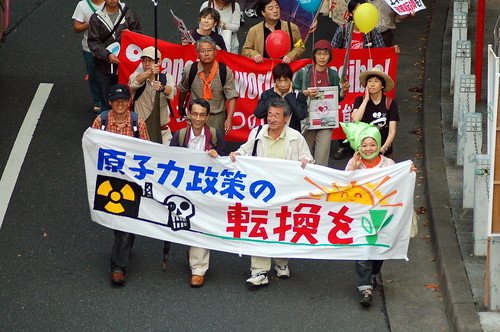
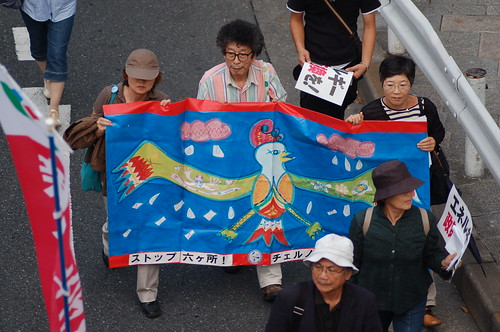
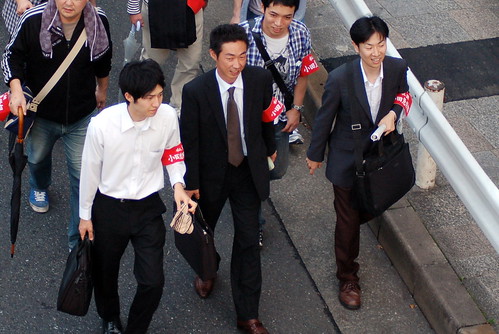
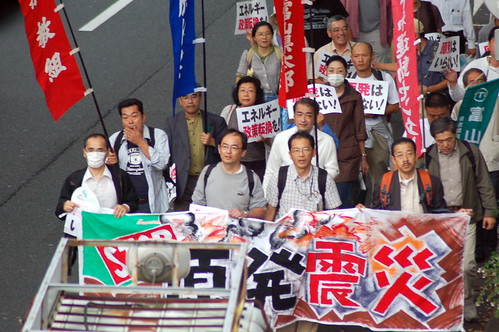
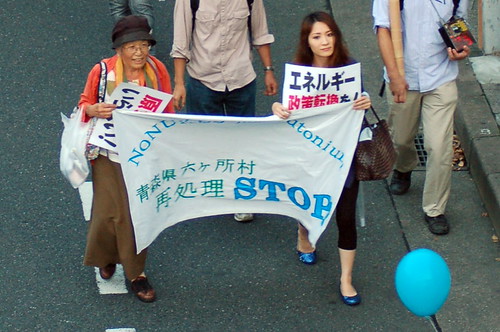
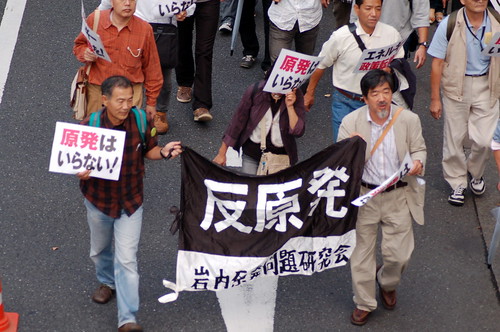
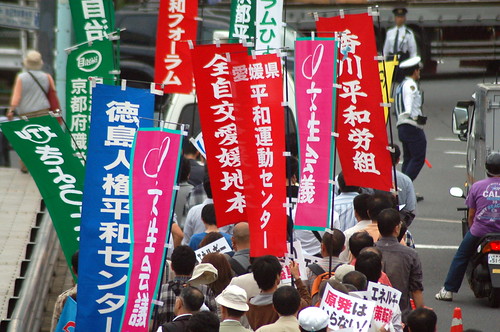



























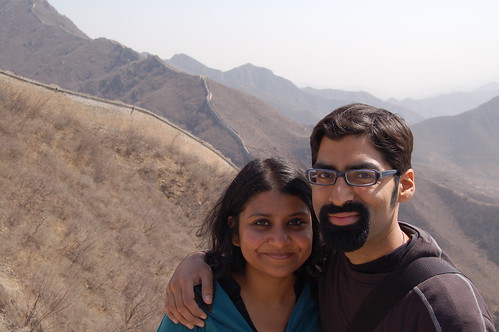
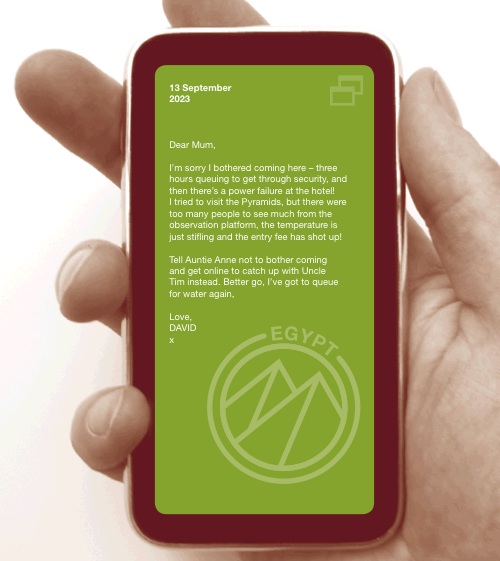







Crossing the Pacific by container ship: a report back